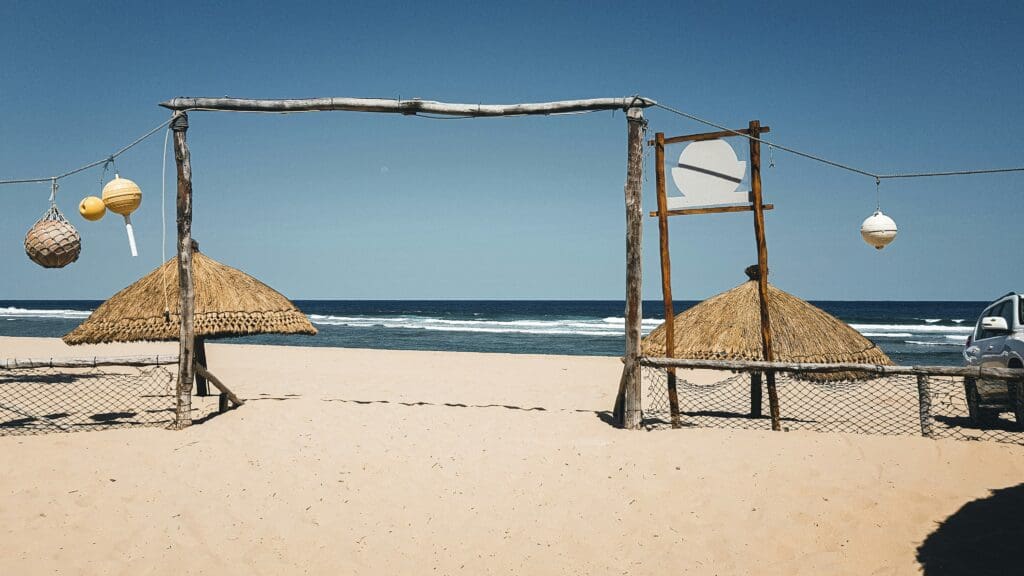Mozambique
Country Name: Republic of Mozambique
Capital City: Maputo
Population: Approximately 32.5 million (2023 est.)
Official Language: Portuguese; other widely spoken languages include Makhuwa, Tsonga, and Sena.
Currency: Mozambican Metical (MZN)
Time Zone: Central Africa Time (CAT), UTC +2




Diving Overview
Mozambique offers some of the best diving experiences along its extensive Indian Ocean coastline, featuring pristine coral reefs, abundant marine life, and clear waters. The country’s diverse marine ecosystems provide opportunities for both novice and experienced divers.
- Number of Dive Sites: Over 50. Numerous dive sites along the southern and northern coasts, particularly around the Bazaruto Archipelago and the Quirimbas Islands.
- Types of Diving: Reef, drift, wall, and wreck diving.
- Marine Biodiversity Highlights: Whale sharks, manta rays, dolphins, turtles, various species of reef fish, and vibrant coral reefs.
- Average Water Temperatures: 24-29°C (75-84°F).
- Visibility Range: 10-40 meters (33-131 feet).
Important Information
Optimal Dive Seasons
The best diving conditions are typically from May to October, when the waters are calmer and visibility is high.
Major Airports
Maputo International Airport, Beira Airport, Nampula Airport
The Travel Tip
A 3mm wetsuit is generally sufficient for diving in Mozambique’s warm waters, but a 5mm wetsuit is recommended for deeper dives or during cooler months.
Weather Patterns
Mozambique has a tropical to subtropical climate with a rainy season from November to April and a dry season from May to October. Coastal areas are generally hot and humid.
Internal Transportation
Options include domestic flights, buses, and a network of taxis and minibuses, providing connectivity across major cities and regions.
Attractions
Major attractions include Bazaruto Archipelago, Gorongosa National Park, Quirimbas Islands, and the colonial architecture of Ilha de Moçambique.
Top Dive Regions
Mozambique boasts some of the best diving locations along its extensive Indian Ocean coastline, characterized by diverse marine ecosystems and clear, warm waters. The Bazaruto Archipelago is renowned for its pristine coral reefs, crystal-clear waters, and abundant marine life, including dolphins, turtles, and a variety of reef fish. The Quirimbas Islands offer untouched coral reefs and a plethora of marine species, providing excellent diving and snorkeling opportunities. Tofo Beach is famous for its regular sightings of whale sharks and manta rays, making it a hotspot for marine enthusiasts. Lastly, Ponta do Ouro features a variety of dive sites rich in marine biodiversity, including dolphins, sharks, and colorful reef fish, along with excellent visibility. These top dive regions highlight Mozambique’s rich underwater environments, attracting divers from around the world.

Bazaruto Archipelago
Known for its crystal-clear waters, diverse marine life, and vibrant coral reefs, the Bazaruto Archipelago offers some of the best diving in Mozambique.

Quirimbas Islands
Famous for their untouched coral reefs and abundant marine species, providing excellent opportunities for both diving and snorkeling.

Tofo Beach
Renowned for regular sightings of whale sharks and manta rays, making it a popular destination for marine enthusiasts.

Ponta do Ouro
Offers a variety of dive sites with rich marine biodiversity, including dolphins, sharks, and colorful reef fish, along with excellent visibility.
Marine Life
Mozambique’s marine life is incredibly diverse, offering a spectacular underwater experience. The warm, clear waters along the Indian Ocean coastline host a rich array of species, including whale sharks and manta rays, especially around Tofo Beach. The coral reefs in the Bazaruto Archipelago and Quirimbas Islands teem with colorful reef fish, such as parrotfish, angelfish, and butterflyfish, alongside various species of nudibranchs and crustaceans. Sea turtles and dolphins are frequently encountered, along with several species of sharks like reef sharks and the occasional hammerhead.
Common Species: Whale sharks, manta rays, sea turtles, dolphins, reef sharks, parrotfish, angelfish, butterflyfish, nudibranchs, and crustaceans.
Seasonal Highlights: Whale shark sightings peak from October to March, manta rays from May to October, and sea turtle nesting from November to February.
-
Best time to dive in Tofo Beach
Diving in Tofo Beach is a dream come true for many scuba diving enthusiasts. This idyllic location in Mozambique is known for its vibrant marine life, crystal-clear waters, and diverse underwater landscapes. However, to truly experience all that Tofo Beach…
-
Dive sites in Tofo Beach
Nestled on the stunning coast of Mozambique, Tofo Beach offers a paradisiacal blend of sun, sand, and sea. But what truly sets this destination apart is its exhilarating dive sites, which draw underwater adventurists from around the globe. Whether you’re…
-
Overview of Tofo Beach
Tofo Beach, located in Mozambique, is a paradise for scuba divers and marine enthusiasts. This picturesque destination stands out for its white sandy beaches, crystal-clear waters, and vibrant marine ecosystems. Known for its laid-back atmosphere and stunning underwater scenery, Tofo…
-
Dive sites in Bazaruto Archipelago
Introduction Imagine plunging into the crystal-clear turquoise waters of the Bazaruto Archipelago, a dreamlike location in Mozambique’s Indian Ocean. Known for its paradisiacal beauty both above and below the surface, diving in the Bazaruto Archipelago offers an unparalleled underwater experience.…
-
Overview of Bazaruto Archipelago
Introduction Overview The Bazaruto Archipelago, located off the coast of Mozambique in the Indian Ocean, is a paradisiacal haven for divers and marine enthusiasts. This stunning collection of six islands—Bazaruto, Benguerra, Magaruque, Santa Carolina, Bangué, and Shell Island—offers pristine beaches,…
-
Best time to dive in Bazaruto Archipelago
Diving in the Bazaruto Archipelago is a breathtaking adventure, nestled off the coast of Mozambique and renowned for its crystal-clear waters, vibrant marine ecosystems, and stunning coral reefs. To make the most out of your diving experience, it’s crucial to…



